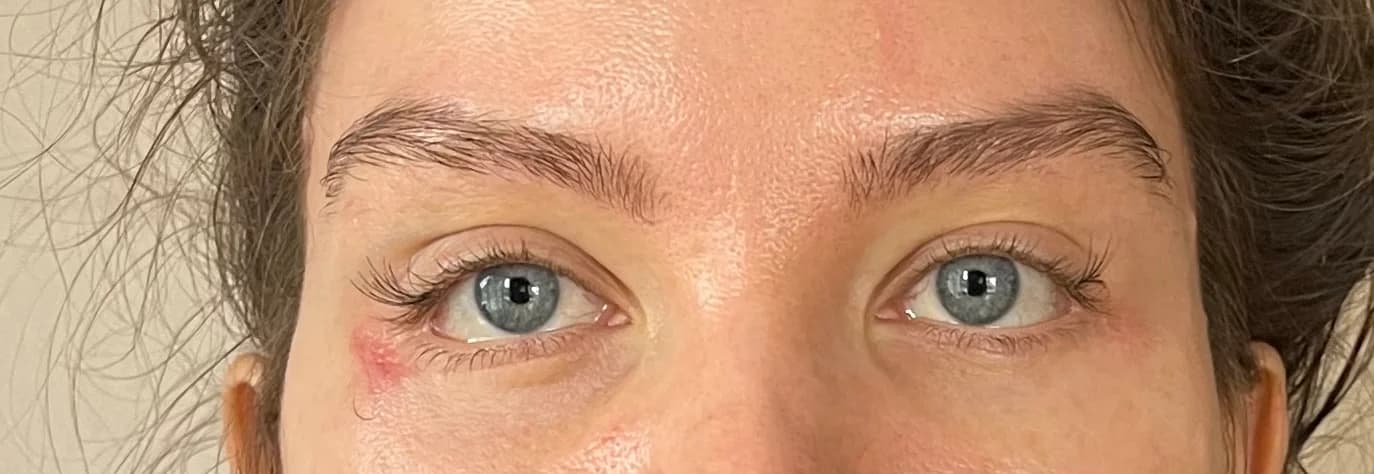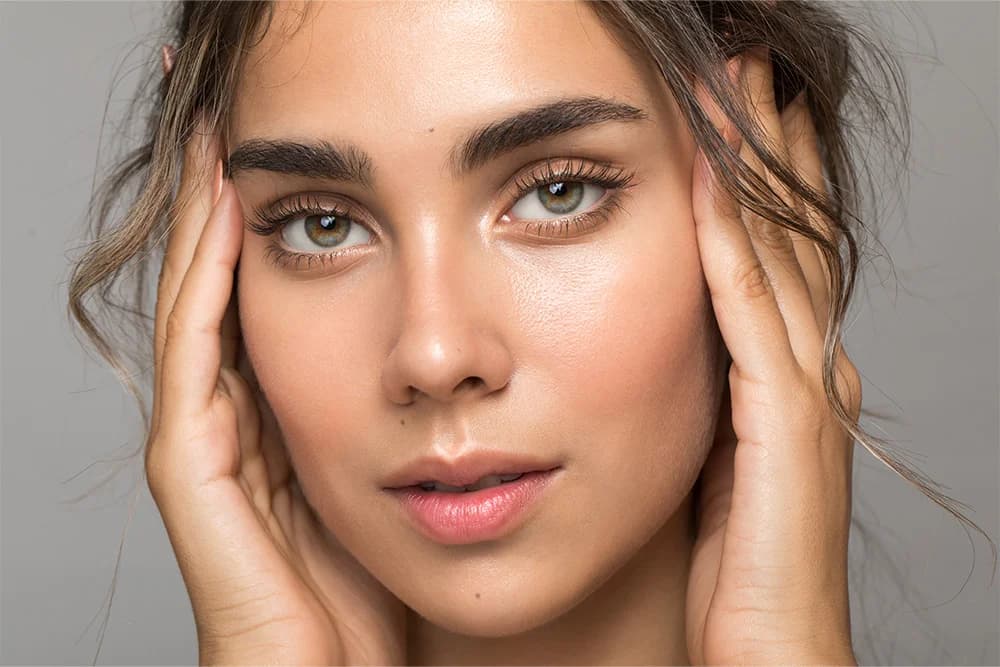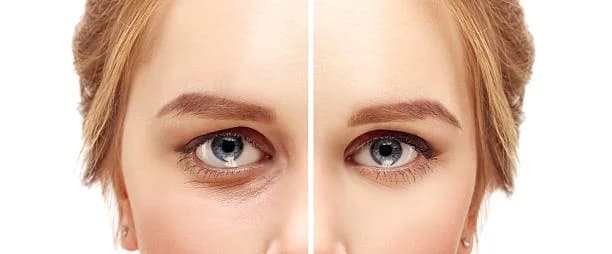While blepharoplasty is the surgery that removes excess skin from the eyelids, canthoplasty involves reshaping the corner of the eye. As blepharoplasty fixes sagging eyebrows, droopy upper lids, and bags under the eyes, canthoplasty is used to correct drooping or sagging of the outer corner of the eye by elevating the canthal angle to achieve a bigger and brighter-looking eye.
What’s the difference between a Canthoplasty and a Blepharoplasty?
Canthoplasty surgery should not be confused with another type of eyelid surgery known as a lower lid blepharoplasty. Blepharoplasty is done to make the eyes appear younger by removing excess skin, muscle, and fat from the lower upper eyelid, not modifying the shape or size of the eye. But canthoplasty surgery is designed to lift the eye’s outer corner (the lateral canthus), reshape the eye to a more almond configuration, and enlarge the eye-opening. The net result is a brighter, bigger, more awake-looking eye.

What is a Canthoplasty surgery?
A canthoplasty is a cosmetic procedure that involves reshaping the outer corner of the eye. This surgery is ideal for those with sagging or uneven eyelids. Canthoplasty can tighten a saggy, loose lower eyelid, and reshape and reposition the lateral canthus. This surgery aims to tone the shape of the eyelids and leave a younger, more refreshed appearance.
What is blepharoplasty?
Blepharoplasty is a surgical procedure done to reduce baggy lower eyelids and help improve hooding of the upper eyelids. Blepharoplasty often calls for the removal of excess skin, muscle, and underlying fatty tissue, but sometimes tissues can be repositioned rather than removed. Blepharoplasty with fat removal does not eliminate dark circles under the eyes or remove crow's feet or other facial wrinkles. Blepharoplasty might be an option for:
Baggy or droopy upper eyelids
Excess skin of the upper eyelids that partially blocks peripheral vision
Excess skin on the lower eyelids
Bags under the eyes

What are the advantages of each surgery?
Advantages of Canthoplasty
Canthoplasty is a surgical procedure that offers several benefits. It primarily serves to enhance the aesthetic appeal of the eyes by altering their shape, often making them appear larger and more almond-shaped. This can boost self-confidence and satisfaction with one’s appearance. Canthoplasty is also beneficial for correcting a condition known as lateral canthal tendon laxity, which can cause discomfort and vision problems. The procedure involves tightening the tendon and improving comfort and vision. Another advantage is the relatively short recovery time, with most patients returning to normal activities within a few weeks. The procedure results in minimal visible scarring due to small, well-hidden incisions. Canthoplasty can be performed alongside other eyelid surgeries for a comprehensive approach to eyelid rejuvenation. Lastly, the results of canthoplasty. are typically long-lasting, providing a permanent solution for those seeking to alter the shape of their eyes.
Advantages of Blepharoplasty
Blepharoplasty, also known as an eyelid lift, is a surgical procedure that offers numerous benefits. Primarily, it can significantly improve the appearance of droopy or baggy eyelids, resulting in a more youthful and refreshed look. This can greatly enhance one’s self-esteem and confidence. In addition to cosmetic benefits, blepharoplasty can also provide functional advantages. For individuals whose sagging upper eyelids obstruct their vision, this procedure can effectively eliminate the obstruction and improve their field of sight. Furthermore, the procedure is typically performed on an outpatient basis, meaning patients can return home the same day. The recovery period is relatively short, with most patients able to return to normal activities within 10 to 14 days. Lastly, the results of blepharoplasty are long-lasting, providing a permanent solution for those seeking to improve the appearance of their eyelids.

What are the Risks and Side effects of each surgery?
Risks and Side Effects of Canthoplasty
Like any surgical procedure, canthoplasty carries certain risks and potential side effects. Immediately following the procedure, patients may experience swelling, bruising, and discomfort in the treated area. These symptoms are typically temporary and subside within a few days. There’s also a risk of infection, although this is rare and can be minimized by following post-operative care instructions. Some patients may experience changes in their tear drainage system leading to dry eyes or excessive tearing. In rare cases, there can be an asymmetry between the two eyes or a change in the lateral angle of the eye. This could require additional corrective surgery. Furthermore, as with any type of surgery, there’s always a small risk of an adverse reaction to anesthesia. It’s important for anyone considering canthoplasty to discuss these potential risks and side effects with their surgeon before the procedure. Remember, individual experiences may vary and it’s crucial to have realistic expectations.
Risks and Side Effects of Blepharoplasty
Blepharoplasty, or eyelid surgery, while generally safe, does carry potential risks and side effects. Common side effects include temporary discomfort, swelling, and bruising around the eyes, which usually subside within a couple of weeks. Some patients may experience dryness, irritation, or tearing due to changes in the eye’s tear film. There’s also a risk of infection and bleeding, although these are rare. In some cases, patients may have difficulty closing their eyes completely, which can lead to dry eyes and other complications. More serious but rare complications include vision changes or loss of vision. It’s important to note that most of these risks can be minimized by choosing a qualified surgeon and following all pre-and post-operative care instructions. As with any surgical procedure, patients must discuss potential risks and side effects with their healthcare provider before deciding to proceed with blepharoplasty.
Who is a good candidate for each surgery?
Good Candidate for Canthoplasty
A good candidate for canthoplasty is typically someone who is in good general health and has realistic expectations about the outcome of the procedure. This procedure is often sought by individuals who are unhappy with the shape or size of their eyes and desire a more almond-shaped appearance. It can also be beneficial for those who have experienced sagging or drooping of the outer corners of their eyes due to aging or previous surgeries. Additionally, individuals suffering from a condition known as lateral canthal tendon laxity, where the tendon in the outer corner of the eye becomes loose, may also benefit from canthoplasty. It’s important to note that the suitability of a candidate should be determined by a qualified healthcare professional who can assess the individual’s specific needs and circumstances. As with any surgical procedure, potential candidates should be well-informed about the risks, benefits, and recovery process associated with canthoplasty.
Good Candidate for Blepharoplasty
A good candidate for blepharoplasty, or eyelid surgery, is typically someone who is in good general health and has realistic expectations about the results. This procedure is often suitable for individuals who have excess skin or fat in the upper or lower eyelids, leading to a tired or aged appearance. It can also benefit those whose vision is obstructed due to drooping upper eyelids. Non-smokers are generally preferred candidates as smoking can complicate both the procedure and the recovery process. It’s important to note that while blepharoplasty can enhance one’s appearance and may improve self-confidence, it does not alter the fundamental facial structure or halt the aging process. As with any surgical procedure, potential candidates should have a thorough discussion with a qualified healthcare provider to understand the risks, benefits, and recovery process associated with blepharoplasty.

How is Recovery for each surgery?
Recovery from Canthoplasty
After a canthoplasty procedure, patients typically experience some swelling and bruising in the treated area, which usually subsides within a week or two. Pain is generally minimal and can be managed with over-the-counter pain relievers or prescribed medication. It’s important to avoid strenuous activities and heavy lifting for at least a week to prevent any complications. Patients are also advised to sleep with their heads elevated to reduce swelling. The stitches are usually removed after about a week, and most patients can return to work and normal activities within two weeks. However, complete healing and final results may take several months as the tissues need time to settle and the scars to fade. Regular follow-ups with the surgeon are crucial during the recovery period to monitor healing and address any concerns. As with any surgical procedure, individual recovery times may vary, and it’s important to follow all post-operative care instructions provided by the healthcare provider.
Recovery from Blepharoplasty
Recovery after blepharoplasty, also known as eyelid surgery, typically takes around 10 days on average. During this period, patients may experience common postoperative side effects such as watery eyes, dry eyes, swelling, and bruising. To manage these symptoms, the surgeon may prescribe eye drops for dryness and recommend the use of ice to help reduce swelling within the first 24-48 hours after the surgery. It’s important to note that the final results of the surgery usually emerge within 4 months. The recovery process can vary from patient to patient, depending on factors such as the patient’s pain tolerance, their general health, their body’s natural recovery response, and the specific surgical technique performed. Patients are advised to rest and sleep with their heads raised on 2 to 3 pillows for 2 weeks or as directed by the surgeon to help prevent swelling at the surgical sites. It’s also recommended to follow all provided incision care instructions, maintain proper hydration, and stay out of the sun to help reduce the appearance of scars. Remember, it’s crucial to follow the specific aftercare instructions provided by your healthcare provider to ensure a smooth and speedy recovery.
Conclusion
Which one is better? blepharoplasty or Canthoplasty
Blepharoplasty and Canthoplasty are both surgical procedures that can change the appearance of your eyes and eyelids. The choice between the two largely depends on the specific needs and goals of the patient. Blepharoplasty, also known as eyelid surgery, primarily addresses surplus skin on the eyelids. It’s often used to eliminate drooping or sagging eyelids, which can occur due to aging or other factors. This procedure can help rejuvenate the area around your eyes and make you look more rested and alert. On the other hand, Canthoplasty is a more specialized procedure that reconstructs and lifts the corners of your eyes and eyelids. It’s often performed to tighten a sagging eyelid, reduce an eyelid tilt, adjust uneven eyelids, change the shape of your eye, or increase your field of vision. Canthoplasty can also be used to manage or treat a condition that affects your eyelid.
Read more: